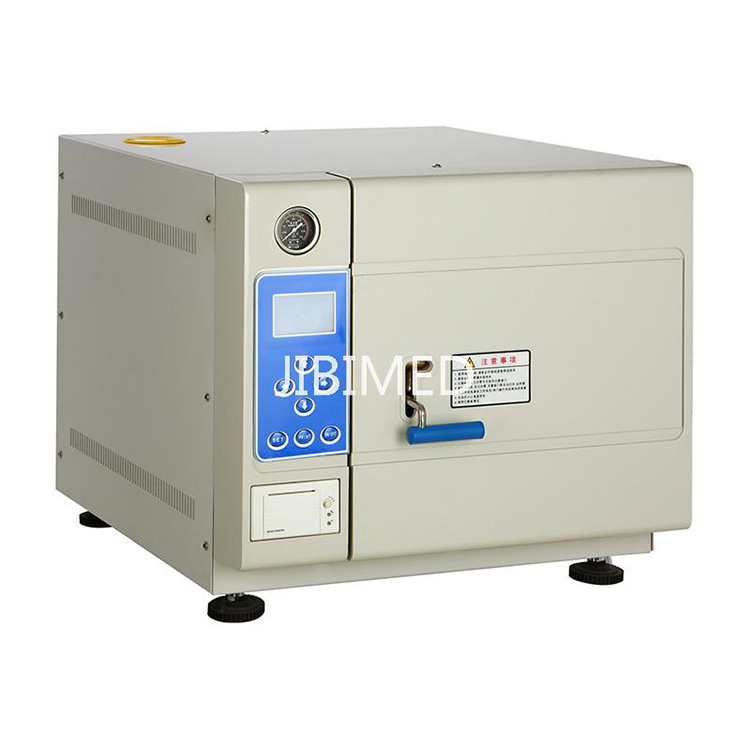Ensuring Optimal Performance: Maintenance Requirements and Service Schedule for Pulsating Vacuum Desktop Steam Automation Sterilization Units
2024-07-03
Pulsating Vacuum Desktop Steam Automation Sterilization units are essential for maintaining high standards of hygiene in medical and laboratory settings. To ensure these units continue to perform at their best, regular maintenance and servicing are crucial. In this blog, we’ll outline the key maintenance requirements for these sterilization units and provide guidance on how often they should be serviced to ensure optimal performance and longevity.
Key Maintenance Requirements
1. Regular Cleaning
Cleaning is fundamental to the maintenance of Pulsating Vacuum Desktop Steam Automation Sterilization units. After each use, it is essential to remove any residues or contaminants that may have accumulated. This involves wiping down the interior chamber, trays, and other accessible parts with a non-abrasive cloth and a mild cleaning solution. Regular cleaning prevents the build-up of debris that can interfere with the sterilization process.
2. Descaling the Chamber
Over time, mineral deposits from water can accumulate in the chamber, affecting the efficiency and performance of the sterilization unit. Descaling involves using a descaling solution to remove these mineral deposits. The frequency of descaling depends on the hardness of the water used in the unit but typically should be done every 20 to 30 cycles or at least once a month.
3. Inspecting and Replacing Seals and Gaskets
The seals and gaskets are critical components that ensure the chamber is airtight during the sterilization process. Regular inspection of these parts is necessary to check for signs of wear, cracking, or damage. If any issues are found, the seals and gaskets should be replaced immediately to maintain the unit’s efficiency and safety.
4. Checking and Cleaning Filters
Pulsating Vacuum Desktop Steam Automation Sterilization units are equipped with filters that need to be checked and cleaned regularly. These filters prevent particles from entering the sterilization chamber, ensuring a clean and efficient process. Depending on usage, filters should be inspected and cleaned every week or replaced if they show signs of excessive dirt or damage.
5. Lubricating Moving Parts
To ensure smooth operation, it’s important to lubricate the moving parts of the sterilization unit. This includes hinges, latches, and other mechanical components that may require lubrication to prevent wear and tear. Use only manufacturer-recommended lubricants and follow the guidelines for application.
6. Calibration and Performance Testing
Regular calibration and performance testing are essential to ensure the sterilization unit is operating within the specified parameters. This involves checking the accuracy of temperature and pressure readings and ensuring the unit is achieving the required sterilization conditions. Calibration should be performed according to the manufacturer’s guidelines, typically every 6 to 12 months.
Service Schedule
Daily Maintenance
- Cleaning: Wipe down the chamber, trays, and accessible parts after each use.
- Inspection: Check for any visible signs of wear or damage.
Weekly Maintenance
- Filter Check: Inspect and clean filters to ensure they are free of debris.
- Lubrication: Apply lubricant to moving parts as needed.
Monthly Maintenance
- Descaling: Perform descaling of the chamber to remove mineral deposits.
- Gasket and Seal Inspection: Thoroughly inspect seals and gaskets for any signs of wear or damage.
Biannual Maintenance
- Calibration and Performance Testing: Conduct detailed calibration and performance tests to ensure the unit operates within the required parameters.
- Professional Servicing: Schedule a professional service check-up to address any potential issues and perform in-depth maintenance tasks.
Annual Maintenance
- Comprehensive Inspection: Perform a thorough inspection of the entire unit, including electrical components, mechanical parts, and safety features.
- Component Replacement: Replace any worn or damaged parts, including seals, gaskets, and filters.
Conclusion
Proper maintenance and regular servicing are vital for the longevity and performance of Pulsating Vacuum Desktop Steam Automation Sterilization units. By adhering to a structured maintenance schedule and addressing issues promptly, you can ensure that your sterilization unit continues to provide reliable and efficient service. This not only maintains high standards of hygiene and safety but also maximizes the return on investment in this critical equipment.



